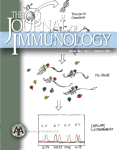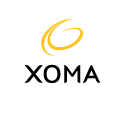In a case that is set to have major impact on the biotechnology industry, the United States Supreme Court heard oral argument yesterday in the case of Matrixx Initiatives Inc. v. Siracusano. The question presented to the court is:
“Whether a plaintiff can state a claim under § 10(b) of the Securities Exchange Act and SEC Rule 10b-5 based on a pharmaceutical company’s nondisclosure of “adverse event” reports even though the reports are not alleged to be statistically significant.”
You can find all the briefs and documents related to the case on the excellent Scotusblog. website. A transcript of yesterday’s oral argument has been published on the U.S. Supreme Court website.
At issue is whether knowledge of possible adverse events is material information that must be disclosed to investors, even if not statistically significant. The biotechnology industry argue that such a requirement would impose an unreasonable burden upon them and could lead to drugs not being developed.
Matrixx Initiatives is a pharmaceutical company that sells OTC cold remedy products including Zicam Cold Remedy Nasal Gel that was recalled in 2009 following an FDA determination that the product was not safe. During the period 2002- 2004 the company became aware of reports that use of its nasal gel was linked to a loss of smell, anosmia. The company did not announce this information to investors until after several law suits were filed and several notifications of a possible link between the smell loss and Zicam nasal gel had been made to it.
Shareholders subsequently brought a class action law suit alleging that the company and its executives violated the Securities Exchange Act of 1934 by failing to disclose material information. The District Court granted Matrixx’s motion to dismiss the complaint and action for a failure of the shareholders to make a claim. The U.S. Court of Appeals for the 9th Circuit in a June 2009 opinion reversed this decision, and the U.S. Supreme Court granted a writ of certiorari to hear an appeal.
Rule 10b-5 of the Securities and Exchange Commission (SEC) states that:
“It shall be unlawful for any person directly or indirectly…. to make any untrue statement of a material fact or to omit to state a material fact …in connection with the purchase or sale of any security.”
In the Matrixx case, the shareholders claimed that the failure of the company to disclose information regarding the possible link between Zicam and anosmia was the omission of a material fact. In other words had they known that there was a possibility that Zicam could cause a loss of smell, they would not have bought shares in the company at the price they paid for them or would have sold them.
What is the standard for deciding if something is material? It is “…whether there is a substantial likelihood that a reasonable shareholder would consider the fact important” TSC Industries, Inc. v. Northway, Inc., 426 U.S. 438, 449 (1976).
The District Court dismissed the complaint against Matrixx on the basis that the reports of anosmia were not statistically significant, and therefore not material.
The U.S. Court of Appeals for the 9th Circuit reversed the trial court’s decision, based on the U.S. Supreme Court decision in Basic Inc. v. Levison, 485 U.S. 225, 236 (1988) that held “[t]he determination [of materiality] requires delicate assessments of the inferences a “reasonable shareholder” would draw from a given set of facts and the significance of those inferences to him.”
The 9th Circuit rejected the use of a bright line test of statistical significance as the standard to apply in deciding whether data was material or not. Instead, the Court of Appeals engaged in a fact-specific inquiry and concluded that between 2002 and 2004 there was sufficient information to make a plausible claim that should be put to a jury.
In reversing and remanding the district court’s dismissal of the shareholders action, the 9th Circuit concluded that “the District Court’s reliance on the statistical significance standard to conclude that Appellants failed to establish materiality is inconsistent with the Supreme Court’s rejection of bright-line rules and its emphasis on having materiality determined by the trier of fact.”
The case is now on appeal to the United States Supreme Court, and several leading biotechnology associations have filed amicus briefs seeking to have this decision over-turned. Bay Bio argue that the non-disclosure of statistically insignificant adverse event reports does not make a company’s statements about its products or earnings fraudulent under the securities laws. Bay Bio raises the concern that failure to disclose isolated reports of adverse events, even if not medically or statistically significant, will lead to potential liability. In their amicus brief, Bay Bio argue that:
“If left standing, the Ninth Circuit’s rule will require companies to make boilerplate disclosures of adverse event reports virtually every time that they make a statement, along with a disclaimer that the company does not believe that such reports have any bearing on their statements. Such an information dump will add nothing to the mix of information already available to reasonable investors. At the same time, such disclosures will needlessly cause consumers to avoid using safe, beneficial drugs.”
I am not sure that I agree with this position. Are adverse events material information – yes? If only statistically significant data mattered, then scientific papers and presentations of clinical trial results would not include non-significant information. In fact, an adverse event may be significant in one trial and not in another, based on the sample size, power of the study, patient selection criteria and clinical trial design.
I am not persuaded that only statistically significant data are material to physicians, investors and patients.
As to the burden on the industry, I am also not sure that I accept the dark picture painted that making adverse event data available will be an unreasonable burden, in light of existing reporting mechanisms. One has to remember that Zicam nasal gel, the product in question in this case, was being sold to consumers – it was not an investigational product. Looking at the totality of the information about a potential serious adverse event such as loss of smell, one has to believe that after several reports and law suits, there was some obligation to let investors and consumers know.
What’s the outcome in the U.S. Supreme Court – clearly to grant a writ of certoriari, there are at least four justices who wish to hear this case. Whether they have a pro-business view that requires this case be overturned or a pro-consumer view that favors full disclosure of information to investors, I have no crystal ball as to the outcome.
Justice Kagan in oral argument was razor sharp, noting that:
“the FDA takes action all the time as to drugs, they force the withdrawal of a drug from the market, they force relabeling of a drug on the basis of findings that are not statistically significant. Now, clearly in those cases the market has a right to know the very things that are going to make the FDA take action against a product and that are going to severely affect the product’s value to the company. Not statistical significance there.”
She pointed out to Jonathan Hacker, Esq. the attorney for Mattrix that he was:
“suggesting a test for what counts as material, which is statistically significant, a test that the FDA itself doesn’t use when it thinks about what it should what should regulate.”
Justice Kagan clearly was on good form and went on with the following hypothetical, how would you answer it?
“There’s a pharmaceutical company and it comes out with its first and only product, it’s 100 percent of the sales, and it’s a new contact lens solution. And it sells this product to many, many, many hundreds of thousands of people. And most of them use this product with no adverse effect whatsoever, but there are ten cases where somebody uses this product and they go blind. Three of those ten cases, the person had to borrow a contact lens from a friend, only used it in one eye, they go blind only in that one eye. This is not statistically significant. There is no way that anybody would tell that you these ten cases are statistically significant. Would you stop using that product and would a reasonable investor want to know about those ten cases?”
My answer would be “yes” I would want to know and even though not statistically significant, this is material information that I would want to know about before it was talked about on “Good Morning America” and everyone then dumped their stock.
So at the risk of alienating those in the biotechnology industry who think otherwise, my money is that the court will uphold the 9th Circuit opinion and not impose a bright line rule that materiality is governed by statistical significance. We can expect a decision towards the summer on a case that may lead to major changes in how adverse events are reported by pharmaceutical and biotechnology companies.

 Following on from the recent rise in
Following on from the recent rise in  Intellectual property (IP) rights are important in the biotechnology industry; one only has to look at a licensing, consulting or service agreement to appreciate this.
Intellectual property (IP) rights are important in the biotechnology industry; one only has to look at a licensing, consulting or service agreement to appreciate this.